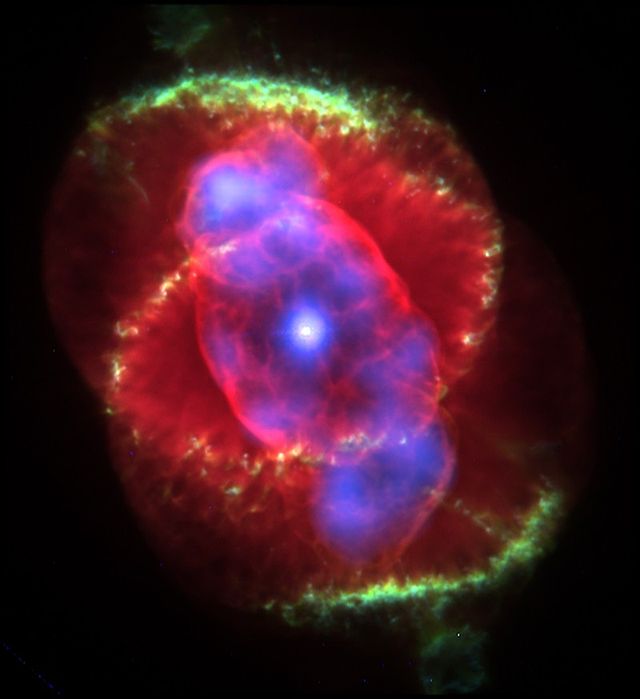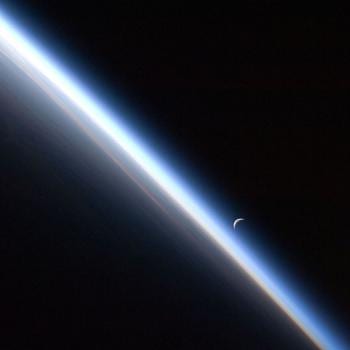
I’ve long been interested in what are called “fine-tuning” arguments for the existence of God. I’ve posted many entries here that have been devoted to them either wholly or in part. (See, for example, my several discussions of the late British particle physicist Sir John Polkinghorne, who spent his last decades as an Anglican priest, and the blog entries that I’ve based upon Geraint F. Lewis and Luke A. Barnes, A Fortunate Universe: Life in a Finely Tuned Cosmos (Cambridge: Cambridge University Press, 2016).
But I’ve never sat down to think systematically through the fine-tuning arguments — or, more typically and usefully for me personally, to write through them. However, I think that I’ll start on that right now. I’ll do so, at this stage, with rather obvious and slavish dependence on the online “List of Fine-Tuning Parameters” compiled by Jay W. Richards. I claim no originality here, and may never claim any (though I’ll eventually and gradually re-arrange things and reword them as I develop my own presentation, for which this blog entry and others will be preparatory work). Richards lists six sources in the bibliography for his list; I’ve already read the first two and the last two items in his bibliography and own and have partially read the other two. As I’ve wrestled with the question of how to organize all of the material that I’ve amassed, Dr. Richards’s handy list strikes me as a helpful basic summary that I can use to begin to structure my own (longer) treatment:
Guillermo Gonzalez and Jay Richards, The Privileged Planet: How Our Place in the Cosmos is Designed for Discovery (Washington DC: Regnery, 2004).
Robin Collins, “The Teleological Argument: An Exploration of the Fine- tuning of the Cosmos,” Blackwell Companion to Natural Theology, edited by William Lane Craig and J.P. Moreland (Oxford: Blackwell Pub., 2009)
John Barrow and Frank Tipler, The Anthropic Cosmological Principle (Oxford: Oxford University Press, 1986).
Roger Penrose, The Road to Reality: A Complete Guide to the Laws of the Universe (New York: Vintage, 2007).
Paul Davies, The Accidental Universe (Cambridge: Cambridge University Press, 1982).
Martin Rees, Just Six Numbers: The Deep Forces that Shape the Universe (New York, NY: Basic Books, 2000.)
As Dr. Richards explains it,
“Fine-tuning” refers to various features of the universe that are necessary conditions for the existence of complex life. Such features include the initial conditions and “brute facts” of the universe as a whole, the laws of nature or the numerical constants present in those laws (such as the gravitational force constant), and local features of habitable planets (such as a planet’s distance from its host star).
The basic idea is that these features must fall within a very narrow range of possible values for chemical-based life to be possible.
Some popular examples are subject to dispute. And there are some complicated philosophical debates about how to calculate probabilities. Nevertheless, there are many well-established examples of fine-tuning, which are widely accepted even by scientists who are generally hostile to theism and design. For instance, Stephen Hawking has admitted: “The remarkable fact is that the values of these numbers [the constants of physics] seem to have been very finely adjusted to make possible the development of life.” (A Brief History of Time, p. 125)
Richards’s entire list runs to twenty-two items. He describes it as a relatively conservative list; other lists sometimes run as high as into the nineties. I may end up expanding my own list a bit, but his seems a good starting point. And I’ll commence, as he himself does, with the five “cosmic constants,” of which the first four are the so-called “fundamental forces”:
* Gravitational force constant (large scale attractive force, holds people on planets, and holds planets, stars, and galaxies together) — too weak, and planets and stars cannot form; too strong, and stars burn up too quickly.
* Electromagnetic force constant (small scale attractive and repulsive force, holds atoms electrons and atomic nuclei together) — If it were much stronger or weaker, we wouldn’t have stable chemical bonds.
* Strong nuclear force constant (small-scale attractive force, holds nuclei of atoms together, which otherwise repulse each other because of the electromagnetic force) — if it were weaker, the universe would have far fewer stable chemical elements, eliminating several that are essential to life.
* Weak nuclear force constant (governs radioactive decay) — if it were much stronger or weaker, life-essential stars could not form.
The fifth of the five “cosmic constants” is of a slightly different character:
* Cosmological constant (which controls the expansion speed of the universe) refers to the balance of the attractive force of gravity with a hypothesized repulsive force of space observable only at very large size scales. It must be very close to zero, that is, these two forces must be nearly perfectly balanced. To get the right balance, the cosmological constant must be fine-tuned to something like 1 part in 10120. If it were just slightly more positive, the universe would fly apart; slightly negative, and the universe would collapse.
Dr. Richards follows with this important explanation:
As with the cosmological constant, the ratios of the other constants must be fine-tuned relative to each other. Since the logically-possible range of strengths of some forces is potentially infinite, to get a handle on the precision of fine-tuning, theorists often think in terms of the range of force strengths, with gravity the weakest, and the strong nuclear force the strongest. The strong nuclear force is 1040 times stronger than gravity, that is, ten thousand, billion, billion, billion, billion times the strength of gravity. Think of that range as represented by a ruler stretching across the entire observable universe, about 15 billion light years. If we increased the strength of gravity by just 1 part in 1034 of the range of force strengths (the equivalent of moving less than one inch on the universe-long ruler), the universe couldn’t have life sustaining planets.
My plan is to take Jay Richards’s list as an initial template for an extended (off-blog) treatment of the fine-tuning argument, in which I will flesh each of them out on the basis of my further reading. This should be good, clean fun. And my getting started on it is long overdue.












